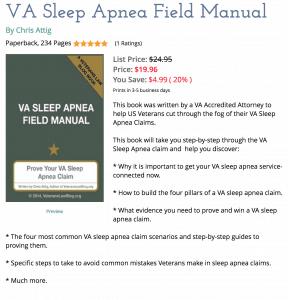One would think that it would be easy to add dependents to VA Disability Claims.
If that’s what you think, you’d be wrong. Questions about dependent payments in VA claims are on the list of Top 10 questions that Veterans ask me when they reach out to contact me.
I’m going to try to answer a few of those questions here.
Read all the way to the end, and see if you can answer a TOUGH question about adding dependents to VA Disability claims that was sent to me by one Veteran.
Who Counts as a Dependent for VA Disability?
With some exceptions, anyone who you can claim as a dependent for income tax purposes can be claimed as a dependent for VA Disability Claims.
This includes: wives, husbands, children, step-children (exceptions exist), adopted children (exceptions exist), parents (exceptions exist).
We’ll cover all those exceptions over time – while they are rare today, in the coming years they will be increasingly more common as the OIF/OEF Veterans return home and settle into civilian lives and start to get hit by the latent disabilities that always come from military service.
When is the Best Time to Add Dependents to VA Disability?
The best time to add dependents is when you file your claim. Get the information on file and then you don’t have to worry about it anymore.
Most Veterans hem and haw about getting the information about VA Disability dependents in to the VA. Why?
Because they won’t see any increase in VA Disability until they reach the 30% VA Disability level, they save it to worry about later.
In fact, when you get an increase in your VA Disability rating that takes you above the 30% marker, you have 1 year to file your dependency information to get the same effective date for your dependents as you did for the claim that got you above 30%.
If you miss that deadline, you stand to lose 1 year – or more – of past due benefits.
And for folks on a fixed income, the difference in VA disability rates for having dependents can make a real difference in your monthly compensation.
How Do you Add Dependents to VA Disability?
As I mentioned above, the best way to add dependents to VA Disability Claims is to do so with your original claim. When you submit VA Form 21-526, or fill out a claims form online, be sure to include the correct information.
The VA is required to accept your statement as to marriage, birth, divorce, etc, so long as your statement includes:
- the date (month and year) and place of the event;
- the full name and relationship of the other person to the claimant;
- and, where the claimant’s dependent child does not reside with the claimant, the name and address of the person who has custody of the child.
- In addition, a claimant must provide the social security number of any dependent on whose behalf he or she is seeking benefits.
Another way to add dependents to VA Disability claims is to hop on eBenefits and add your dependent.
I STRONGLY recommend keeping copies of everything you send to the VA via eBenefits, and if the VA doesn’t acknowledge receipt of it in 2 weeks, send paper in the mail to the Evidence Intake Center.
I don’t yet trust eBenefits.
Not only because my own claim shows a BVA Hearing was held before I ever filed the claim, but also because I have heard – and seen – countless stories of Veterans submitting claims or evidence via eBenefits and having it vaporize – disappear into the cloud.
So if you do use eBenefits – and that is your choice entirely – keep backup copies of everything!
Now….your dependent situation may change while you are collecting VA benefits – be sure to notify the VA right away if you have a DECREASE in the number of dependents (due to divorce, death, aging out for children, etc).
Why?
Because while the VA will take FOREVER to process your VA Form 21-686c, they are quick to come knocking when they fear there is an overpayment.
Download a copy of VA Form 21-686c from the VA’s website by clicking here.
And know…the million dollar question:
When you Add Dependents to VA Disability Claims, what is the RIGHT effective Date?
This story came to me from a Veteran who regularly reads the Veterans Law Blog.
Even though the difference in compensation in his case is only $65 a month, when you are on a fixed income, every dollar counts.
Facts:
* Prior to 2013, I had a 20% service-connected disability rating, and was paid as a single Veteran as there was no other option at this 20% level.
* In September 2013, I filed for an increase.
* In September 2014, my rating was increased to 40%, retroactive to my September 2013 date of claim. My retroactive payment was only for a single Veteran, even though I have been married since 1975.
* Because I had crossed the 30% threshold, I was entitled to retroactive payment for my wife.
* In October 2014, I submitted a VA Form with a copy of my marriage certificate so I could claim retroactive payment for my wife.
* In November 2014, VA acknowledged receipt of my claim and accompanying documentation.
Question:
How far back will the VA pay me for my dependent wife?
In other words, what is the right Effective Date for adding dependents to a VA Disability Claim?
And, will you please write on this subject in your Blog, so that other Veterans might benefit from the problems I have had?
Answer:
The Veteran expressed frustration in his email to me, as he had been told 4 different answers by 4 different people. VSO representatives told him each of the dates in bold above, for different reasons.
Let’s clear up the confusion – the effective date when you add dependents to VA Disability Claims is actually covered by a statute and a regulation.
38 U.S.C. § 5110(f) tells us that an
“…award of additional compensation on account of dependents based on the establishment of a disability rating in the percentage evaluation specified by law for the purpose shall be payable from the effective date of such rating; but only if proof of dependents is received within one year from the date of notification of such rating action.”
Well that’s a mouthful, isn’t it?
Did You Know?
USC stands for United States Code. It is the laws as approved by Congress and signed into law by the President.
38 C.F.R. § 3.401 gives it to us a little bit cleaner. It tells us that there are 4 possible effective dates in the scenario above. The ACTUAL effective date is the LATEST of all of these.
(1) Date of claim. (N.B. – This term means, the Date of veteran’s marriage, or birth of child, or, adoption of a child, if the evidence of the event is received within 1 year of the event. Otherwise, it is the date the VA gets notice of the dependent’s existence, so long as it is received within 1 year of the Department of Veterans Affairs request.)
(2) Date dependency arises.
(3) Effective date of the qualifying disability rating provided evidence of dependency is received within 1 year of notification of such rating action.
(4) Date of commencement of veteran’s award. (N.B. – This is typically the effective date of the benefit which allowed the Veteran to collect dependency rates)
Did You Know?
CFR stands for Code of Federal Regulations. It is the regulations which the Executive Branch writes to take action when a new law is enacted.
So to answer the posters initial question, I would write down each of the four dates listed above, and the latest one is the effective date.
(1) Date of Claim: September 2013
Truth be told….we don’t have this date from the Veterans facts, but let’s say that the Veteran told the VA of his dependents in his original claim in September 2013.
(2) Date Dependency arose: Option A (1975); Option B (September 2013)
This language creates a conundrum: did the dependency arise when the Veteran was married or had the child (Option A), or did it arise when the Veteran crossed to the 30% marker (Option B). I have found no interpretation of this regulation which gives us the answer.
(3) Effective Date of the Qualifying Disability: September 2013
The Veteran’s increased rating from 20% to 40% is the qualifying disability, and the effective date of that claim is September 2013.
(4) Date of Commencement of the Veterans’ Award: September 2013
In the example, the Effective Date of the Qualifying Disability and the Date of Commencement of the Veteran’s Award are the same date. This is not always the case. In fact, more often than not, THIS will be the latest of the 4 dates – it would be (essentially) the effective date of the Increased Rating of the VA Disability claim that took the Veteran across the 30% marker.
Thanks to “Dan A.” for sending in this question.
If you have a question that you would like me to answer on the Veterans Law Blog, please use the Support Button in the lower right corner to send me your questions.






Unless this blog entry represents an amazing coincidence, I believe that I am the “Dan A.” who originated this question to Chris Attig.
The answer that Chris Attig offers above corresponds EXACTLY to what eventually occurred.
I was awarded “back pay” for my wife as dependent.
Just as Chris Attig predicted, that “back pay” was retroactive to the “Date of Commencement of the Veterans’ Award: September 2013.”
My best guess is that my outcome is entirely consistent with Chris Attig’s analytical abilities: i.e., this guy knows whereof he speaks!
Read and heed the man…
– Dan A.
Thanks for asking the question, Dan…and to everyone else, please be sure to submit your questions using the “contact” button on the top menu.
If your question affects a lot of Veterans, I will write about it on the Blog.
Chris